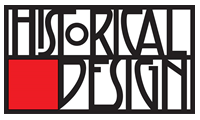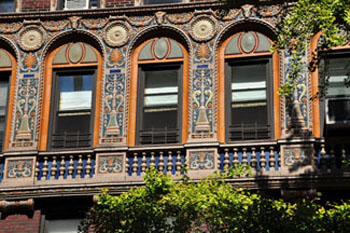Product Description
Eugene Schopin French Renaissance Revival Style Majolica Wall Shelf c.1872


Eugene Schopin (1831-1893) Montigny-sur-Loing, France.
Renaissance-Revival style Majolica wall shelf, circa 1872.
Hand modeled and cast ceramic with highly stylized caryatids and floral details glazed with rich cobalt blue, green, gold and cream colored glazes.
Marks: M-S-L (Montigny-sur-Loing), RA.
H: 8 ½” x W: 14” x D: 6 ¾”.
Eugene Schopin founded his ceramic factory in Montigny-sur-Loing in 1872. Painters like Jean-Baptiste Corot, Eugène Thirion (1839-1910), Adrien Schulz (1851-1931), Numa Gillet (1868-1940) and Lucien Cahen-Michel (1888-1980) were attracted to this area by the beauty of the landscape and light. Eugene Schopin collaborated with these artists to create a range of models inspired by Impressionism and decorated according to the new demands of the public.
Eugene Schopin French Renaissance Revival Style Majolica Wall Shelf c.1872
MAISON OSTERTAG (Place Vendome, Paris) 1920’s and 30’s
ARNOLD OSTERTAG (Jeweler / Designer)
VERGER FRERES (maker)
Art Deco jewel mounted mechanical covered box c. 1925
Of rectangular stepped form, the black enamel box hinged and accented at the top with a gold bezel mounted sugar loaf shaped coral; spring loaded to pull down and reveal a cinnabar red enamel interior, the exterior with gold champlevé set highly stylized geometric initials and further ornamented with geometric square cut out gold applied handles embellished with salmon coral beads and red enamel bands, all resting on a recessed agate base and conforming black onyx base punctuated with a gold bezel mounted sugar loaf shaped coral on each corner.
Marks: Ostertag (on a gold plaque inset into the underside of the onyx base)
H: 4″ x W: 3 1/2″ x D: 3 1/2″
Arnold Ostertag was a Swiss-born jeweler who became a dominant force in the creation of fine jewels and objects in Paris during the 1920s and 30s. After studying dentistry in Chicago, Ostertag embarked on a world tour and, while traveling through India, became fascinated by jewels. He later settled in Paris and opened a very successful salon on the Place Vendome. In design and quality, Ostertag’s jewels, which frequently featured Indian themes, rivaled the production of many of the most famous Parisian jewelry houses. In fact, the renowned clockmaker George Verger/Verger Freres, produced wonderful clocks and mechanical objects for Ostertag, as well as for many other world renowned jewelers and likely masterminded the mechanism of the Art Deco box above. In addition to making pieces for Ostertag, Maison Verger made pieces for Cartier, LaCloche, Marzo, Boucheron, Hermes, Van Cleef & Arpels, Chaumet, Mauboussin, etc. Arnold Ostertag was popular on the international front and made many trips to America spending time in both New York, as well as Los Angeles where he befriended many Hollywood stars. He also received commissions during his trips to make exquisite custom jewelry and precious jeweled objects such as this fine Art Deco box.
EDMOND LACHENAL (1855-1930) Paris, France
Green glazed pitcher / vase form c. 1900
Marks: E LACHENAL (impressed and glazed in a rectangle on base)
For information on Edmond Lachenal see:”Edmond Lachenal”, Fritz Minkus, Kunst und Kunsthandwerk, IV (1901) pp.390-98; La Céramique Art Nouveau, Edgar Pelichet and Michèle Duperrex (Lausanne: Les Éditions du Grand-Pont, Switzerland, 1976) pp. 66,71,74,78,83,112,115; “l’Atelier Lachenal à la galerie Georges Petit “ in Les Echoes d’Art” (1933), p. Vll; Art Nouveau: Belgium & France, exh. cat. Yvonne Brunhammer et al. (Houston, TX: Institute for the the Arts, Rice University, 1976), p. 48; Le Japonisme (Paris: Éditions de la Réunion des Musées Nationaux, 1988) cat no. 377, p. 321; Japonisme: the Japanese influence on western art in the 19th and 20th Centuries, Siegfried Wichmann (Parklane: New York, 1980) pp. 339, 349; cat. no. 920.
H: 9″ x W: 6 3/4″
